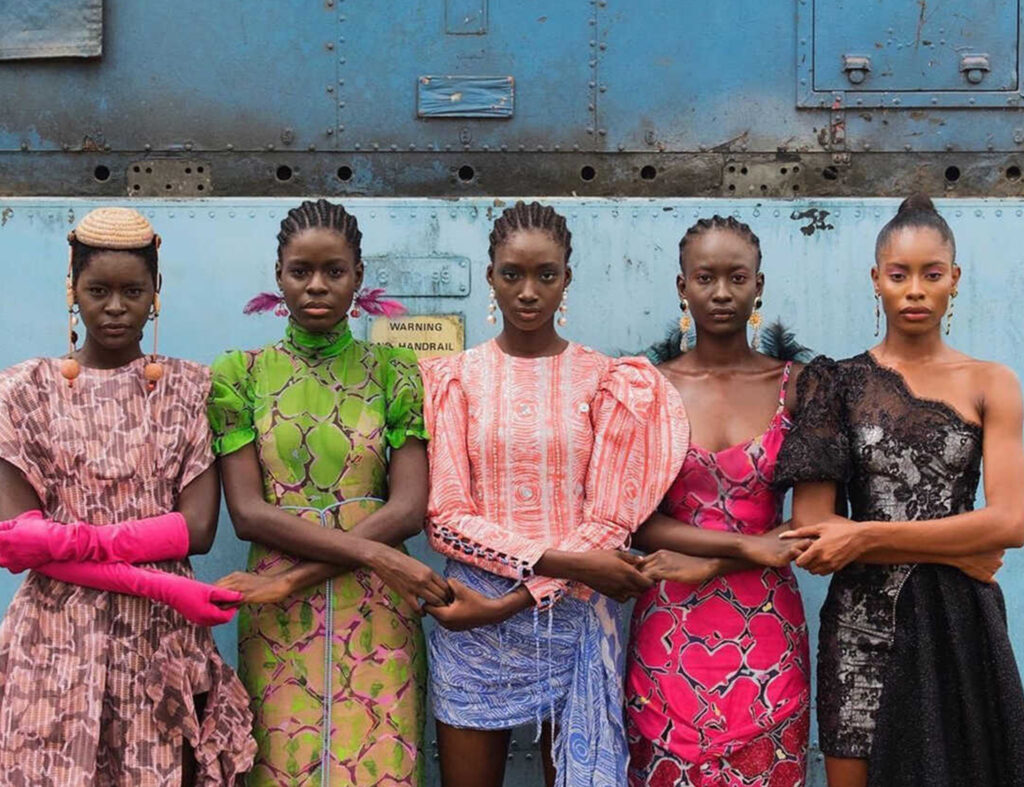Fashion internationalism must now look beyond an Eurocentric perspective and draw from a broader source of creativity with respect. The present exhibition is an occasion to challenge stereotypes, educate and inspire the onlookers to African fashion in its original integrity.
Guenda CermelDecolonising Fashion: Africa Fashion Exhibition at V&A | Guenda Cermel

Africa Fashion opened on Saturday 2nd of July and will be on display until April 2023. For the first time in its history, the Victoria & Albert Museum in London is holding an exhibition that centres solely on African fashion: it will be the UK’s most extensive exposition on the topic to the date, featuring designers who have worked with names including Beyoncé and architect David Adjaye,
The V&A was founded in 1852 and its legacy is tightly tied up with British colonialism across Africa, so the present exhibition could be seen as a statement of a wider move to acknowledge these histories. At the same time it’s a conversational piece on creative developments which have been largely ignored by the west. Fashion becomes a catalyst to tell deeper, richer, expanded stories from across the African continent. This is ‘fashion beyond fashion’ at its purest. The exhibition path displays a colourful storytelling made of mixed media and visual suggestions, with a documentary consistency closer to the anthropology discipline itself, that carry us into the very heart of the African culture and aesthetics.


Fashion has long been seen and taught as centered in Europe, with Japanese designers occasionally highlighted as international non-western exponents. European designers have always borrowed, sometimes even tokenized, African cultures in their designs and catwalk shows. The Western use of African textiles, colours, patterns, and styles often showed a lack of understanding and respect. The designers have been applauded for their take on African heritage and culture, while the originators have been dismissed and left without a platform. The result of this cultural operation looks like more an appropriation rather than appreciation
Fashion internationalism must now look beyond an Eurocentric perspective and draw from a broader source of creativity with respect. The present exhibition is an occasion to challenge stereotypes, educate and inspire the onlookers to African fashion in its original integrity.
.

Due to the vastness of the continent and the variety of fashion stories to be told (over 20 countries, from Morocco to South Africa), the objective of the exhibition is to return to the watcher the whole, rich and vivid complexity of the pan-African fashion scene. What truly connects the various designers across the different historical periods and geographical areas? What is the revelation of this kaleidoscopic journey into a creative body, the African fashion, often misconceived?
The belonging: this is the big response that this joyful path is giving back to the visitor, belonging to the community, belonging to the roots, and overall belonging to the silent, but bewildering soul of Mother Earth.
The exhibition is conceived on more than one layer at the very heart of the V&A Fashion & Costume gallery; the thread is mainly historical, spanning – through textiles, photographs, music, and visual arts- the iconic work of the vanguards (designers and fashion photographers) in the twentieth century and the creatives at the heart of the today eclectic and cosmopolitan scene


It starts with the African independence and liberation years from the mid-late 1950s – 1994 that sparked a radical political and social reordering across the continent, the African Cultural Renaissance section looks at the long period of unbounded creativity. The collection of fashion, music, the visual arts, protest posters, publications and records, show us objects that embody this era of radical change.
We see the Ghanaian prime minister Kwame Nkrumah wearing a traditional kente cloth as he announces his country’s independence from British rule in 1957, and watch as Nelson Mandela rocks his signature look, the casual Madiba shirt that made him feel connected to his people.
Walking through the Politics and Poetics of Cloth section, we can appreciate the importance of cloth in many African countries and how the making and wearing indigenous garments in the moment of independence became a strategic political act.
Capturing Change is focused on the portrait photography of the mid-late 20th century, capturing the mood of nations on the brink of self-rule. The euphoria of decolonization coincides with the democratization of photography which was made possible through cheaper film and lighter-weight cameras. Shots document the modernity, cosmopolitanism, and fashion consciousness of individuals, whilst portraits taken in studios and domestic spaces became affirmations of agency and self-representation – visibly taking pride in being Black and African.
This is a crucial section in our acknowledgment of African aesthetics from its core because we recognize with no filter or manipulation, the great strength of this creative look from the world to the world, expressing the multiplicity and yet the singularity of the individual related to his habitat, in a way that is a thousand miles away from our western attitude. Looking at these pictures help us to realize that if it’s true that the western fashion designers have silently stolen from African fashion closet then it is also true that visual aesthetics from the African continent has quickly and cheerfully contaminated, in the past 3 decades, the exhausted and intimist western visual fashion language.


Following the exhibition path, we can find the first generation of African designers to gain attention throughout the continent and globally in the Vanguard section, while the new generation of ground-breaking designers, collectives, stylists, and fashion photographers working in Africa today are celebrated on the mezzanine level, in the last section called Mixology.
At the end of this circular path, almost a spiral, going out from the show capsule nested in the center of the Fashion Gallery and looking at the capturing cool merchandising at the entrance, we realize that we are truly testifying a statement: the genuineness of the African fashion aesthetics is not anymore synonymous of “too simple” or “primitive”.
The lack of recognition of African fashion could be pinpointed to the years of colonialism and the view that many cultures and heritages of Africa were dismissed as unsophisticated or unqualified to offer fashion and so not worthy enough of exhibiting. This thinking was yet another form of ‘othering’ that grew from the imagery and language perpetrated to ‘sell’ slavery. Colonialists portrayed Africans as uncivilised and different to European people and culture, thereby dehumanising the African continent.
Instead, this exhibition foregrounds individual African voices and perspectives, melting the past and the future on a contemporary timeline. It succeeds in presenting African fashion as a self-defining art form, revealing the richness and diversity of its own histories and cultures, celebrating the innovative gift to establish a creative bridge between the community and the singular identity of Africa, in close connection with nature.
Written by Guenda Cermel @Guen_Da
All the images are taken from Victoria and Albert Museum’s Website




